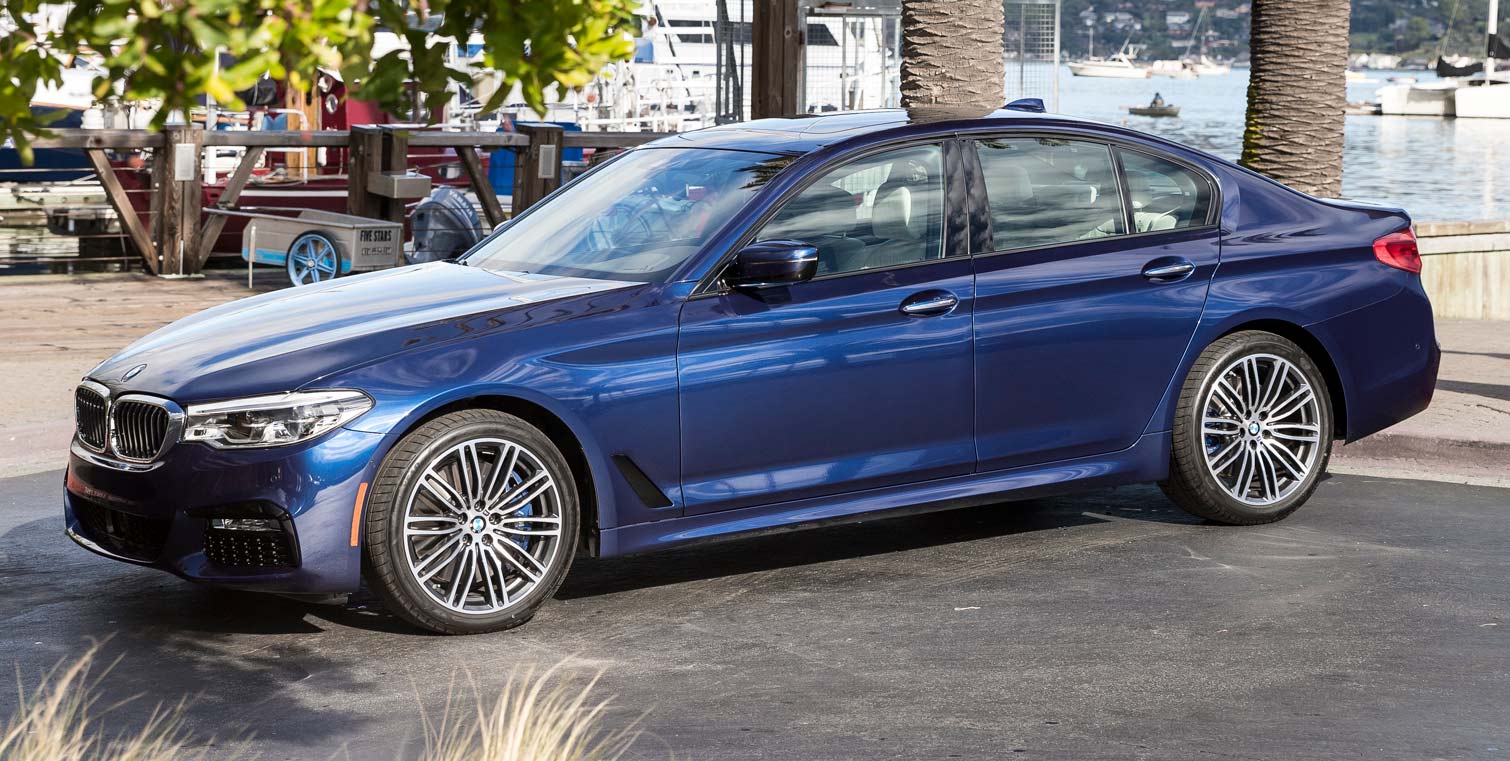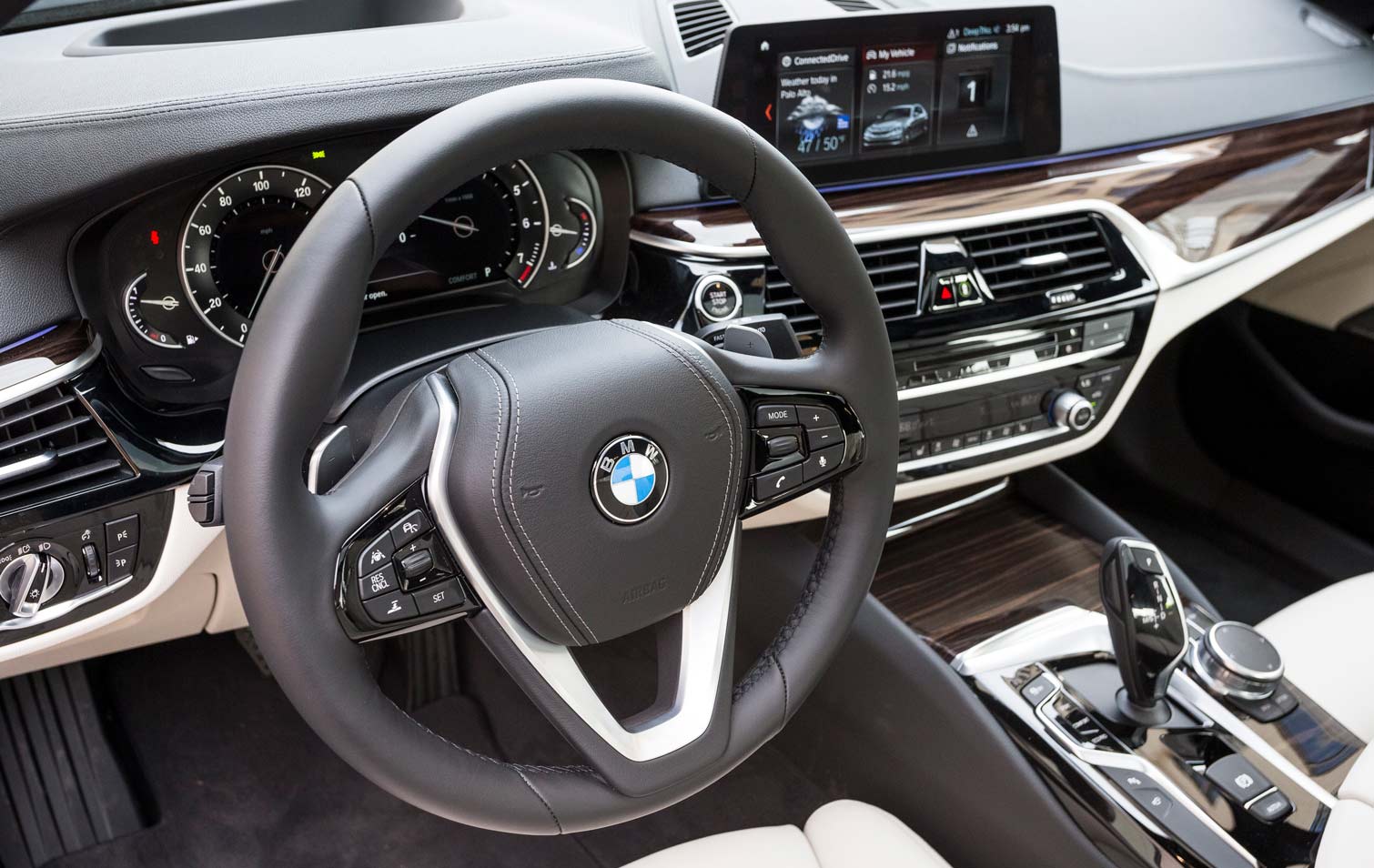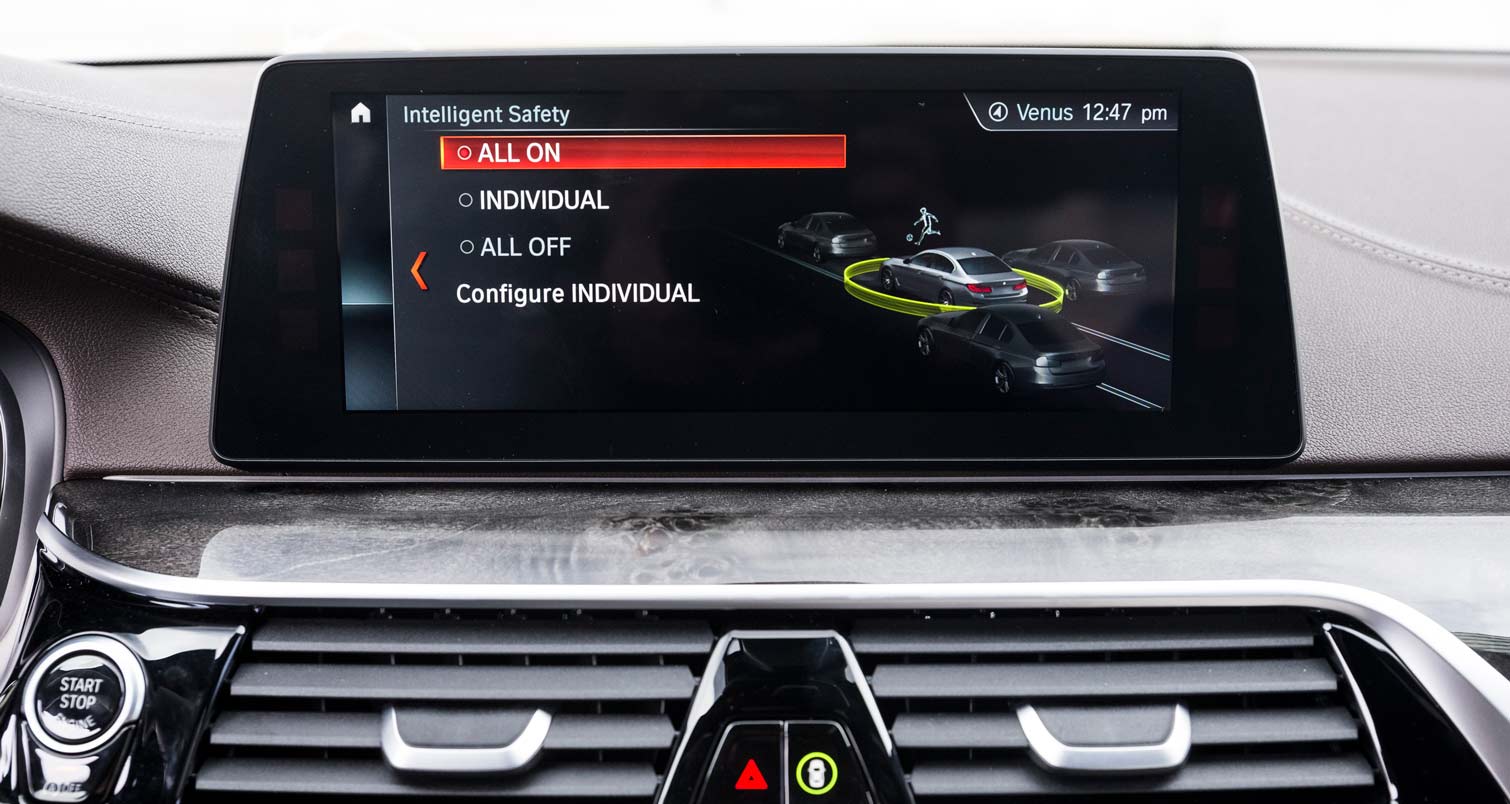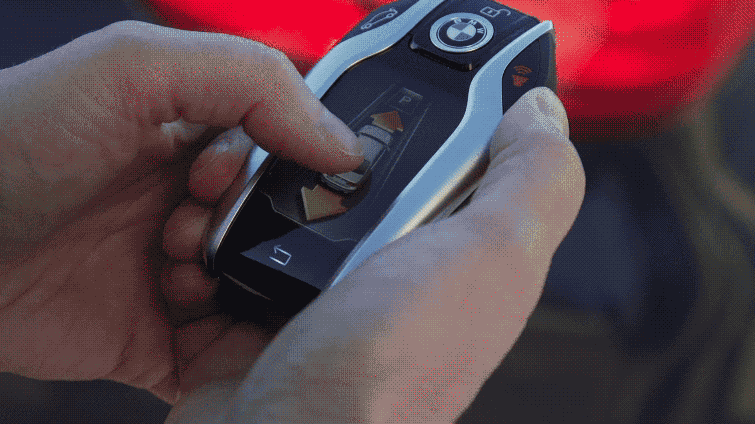Tom's Guide Verdict
The 5 Series offers all the advances that other luxury carmakers crow about, plus better handling and responsiveness when you want to be the one in control.
Pros
- +
Excellent driving feel
- +
Remote control parking assist
- +
Solid suite of driver-assist tech
- +
Built-in massager
Cons
- -
Limited voice recognition controls
- -
Pricier than competition
Why you can trust Tom's Guide
Anyone who values an advanced level of precision will appreciate BMW's redesigned 5 Series sedan. From the outside, the 5 Series may not distinguish itself much from the previous incarnation, but it's what's under the steel and aluminum skin that makes for a marked improvement in technological performance and driving composure.

BMW enthusiasts will note that this is the seventh generation of the 5 Series, and it will be available in several different configurations, including two models I tested: a four-cylinder 530i xDrive, starting at $51,200, and a six-cylinder 540i, which, with all the options, topped out at nearly $82,000.
A plug-in hybrid variant is expected later this year, as is a blow-your-doors-off V8 that BMW promises will deliver a 0-to-60-mph time of 3.9 seconds. So whether you're interested in reducing your carbon footprint or increasing it, BMW will have a 5 Series model for you.
Important tech tweaks, plus massage!
Sticking up out of the dashboard is BMW's 10.2-inch iDrive touch screen. Its position tends to reduce the need to look down to view what's on the screen; however, it does not retract and the display looks like it was jammed into the dash as an afterthought. The iDrive 6.0 infotainment system continues to improve, controlled not only by the push-to-select dial in the center console, but also by touch, gesture, and voice commands.

The gesture commands are a bit more precise than when they were first introduced on the 7 Series. A sensor above the dash recognizes specific waves of the hand and wags of the finger to switch function.
However, the gestures can be a nuisance. During one trip to the airport, I thought there was something wrong with the radio, which kept dropping out, until I realized that every time my passenger spoke, he also gesticulated enthusiastically, unintentionally muting the radio and sometimes changing the station.
MORE: Connected Cars: A Guide to New Vehicle Technology
Get instant access to breaking news, the hottest reviews, great deals and helpful tips.
The 5 Series' speech-recognition system is a more practical means of command and control. It easily recognized street names and addresses for the navigation system, and I was able to switch radio stations without pushing any buttons. However, the voice reco system still cannot make some basic adjustments, such as changing the temperature for the driver. A pleasant feminine alto explains that the function isn't available and to use the buttons in the center console. Other vehicles, such as Fiat Chrysler models with Uconnect, allow you to use spoken commands to adjust the driver and passenger temperatures.

Other features of the connected iDrive system include Apple CarPlay support, a Wi-Fi hotspot (for up to 10 devices), a wireless charging mat and Alexa support (later this year). CarPlay dropped out, of course, when we traveled beyond cellular service range, but all the other services worked smoothly.
Digging through submenus can be daunting with what often seem like a bewildering array of choices. For example, it took me and another driver nearly 20 minutes to figure out how to shut off the nav system's auto zoom.
MORE: Apple CarPlay FAQ: Everything You Need to Know
That raises the issue of potential distractions. After many hours behind the wheel and while sitting in traffic, I decided to avail myself of our test vehicle's built-in massage chair. The spa treatment worked like a charm, easing my tightened hamstrings. There are eight different massage settings and three intensity levels that use 20 air chambers in the front seats to knead out any stress.

The catch? I discovered there are no physical buttons to turn on the massage function; you can only do so by making your way through several levels of the iDrive software and vehicle-controls menu. You can also continue to change intensity settings — while you're driving.
Driver assistance, evolved
To ameliorate concerns about taking your eyes off the road, BMW continues to build out its driver-assistance technologies with further improvements. The lane-departure warning system vibrates the wheel, should you stray without signaling, and the adaptive cruise control with automatic stop and start will keep you safe in bumper-to-bumper traffic. It will bring you to a full stop and then start up again and follow the car in front of you — if you're stationary for 3 seconds or less. Any longer, and the car beeps that the adaptive cruise has switched off.
There is a nifty trick I learned from a BMW engineer that will give you more time in traffic. Simply hit the resume button when you come to a stop, and the 5 Series will give you a full 30 seconds of being stationary before the feature switches off. This is particularly handy in stop-and-go traffic with protracted periods where you're twiddling your thumbs.

BMW also has a lane-keeping feature with active steering, similar to what Mercedes-Benz, Tesla and Volvo offer. BMW is more circumspect in terms of describing it as a sort of highway autopilot, but the system will keep you in the lane and will operate for up to 50 seconds — without your hands being on the wheel.
There is also a full driver-assist option that turns on the active steering automatically whenever you go above 40 mph. It will tug on the wheel and correct your steering if it sees you going out of a lane or that something is hidden in your blind spot. You can override it just by pushing harder on the wheel, or you can switch it off completely using a button in the center stack.
Like other automakers, BMW has offered active parking assist for a while, which is particularly helpful if you find parallel parking a challenge. To this, it has now added a feature to help you find parking spots — even street parking spots. Using information gleaned by other vehicles as they drive down streets coupled with historical parking data collected by Inrix, the 5 Series can tell you which streets are likely to have open spaces. If that doesn't work, you can order a garage spot using ParkNow.
If you find a spot but realize it's a tight squeeze, you can get out of the car and use the car's key fob as a remote control, backing the car straight into a perpendicular spot with only inches to spare. You can't use the feature to remotely parallel park, and the car has to be pretty much lined up to the spot to make it work, but it will give you a kind of James Bond rush when you try it for the first time.

One additional feature that BMW didn't talk about during my testing was a new hazard warning system. It's supposed to warn you of construction, accidents or other problems ahead that neither you nor the car's direct sensors can see. It's based on information from other cars and collated by Inrix. The alert is then transmitted over the cellular connection to other BMW drivers with the same installed option. Admittedly, that makes it of limited practical use at the moment, given how few vehicles can transmit or receive the data, but it offers a glimpse of what's to come in the future with V2V or vehicle-to-vehicle communications.
The drive: Responsive
One of the 5 Series models I tested, the 540i, had the peppy six-cylinder option with the sport package. You still have different driving modes, including comfort and eco modes, so you don't have to endure the firmer suspension on the morning drive. Comfort mode takes the cracks and seams out of the pavement, while I found the sport mode made handling on curvy country roads easier and more precise.
One major change in this 5 Series is the move away from steering hydraulics and to complete electromechanical power steering in all models. In spite of this change, I found the 5 Series' steering yielded excellent feedback, whether I was on a highway, byway or city street. I still felt connected to the road, even on slick pavement or wending my way along a valley floor. And unlike the sports mode in some other cars, at slower speeds the setting didn't turn the wheel into an anvil.

The six-cylinder model was responsive enough, especially when the car was already underway at highway speeds. And if you want the throaty pleasure of increased throttle, the sports mode produces a pleasing rush of exhaust noise. Conversely, you won't find much wanting in the four-cylinder model when you're touring around town or you're in regular commuting traffic. It's just when you expect to jump ahead with a stomp on the gas that you'll suddenly realize you're missing a few horses.
I found the blind-spot and lane-departure warnings helpful and generally accurate; the steering vibration mimics the effect of running over a rumble strip. Adaptive cruise control with auto braking and startup was similarly effective, even with significant rain on the highway.
Semi-autonomous driving: Good, but don’t get cocky
For its semiautonomous driving mode, a stereo camera inside the BMW 5 Series detects lane markings and will help keep you pointed in the right direction for up to 50 seconds of hands-off time. That's not something BMW recommends, and it seemed like an eternity to me when I tried it. On a clear highway, it worked well enough. But it was not up to the task on a sinuous road through the Muir Woods, however.
When the car senses it can no longer clearly see the lines on the road, there's a chime and the steering wheel icon in the cluster goes gray. That may sound like it's adequate warning, but as with similar systems on other cars, it's easy to become complacent and distracted by a conversation and then miss the fact that the car has essentially given up trying to follow the road.
In the rain, the BMW active lane keeping — like many others, including Tesla's and Volvo's — tended to meander back and forth between the lines when they were less than completely visible. It's the kind of behavior that can destroy your confidence in the system — but this is why every advanced driver-assistance option currently on the market includes warnings to drivers to keep their hands on the wheel and their eyes on the road.
MORE: Best High-Tech Cars on the Road
Helping you do so is a color head-up display, which is 75 percent larger than the previous version, according to BMW, and I found it a helpful option, particularly when following arrow directions and lane indicators to reach an unfamiliar destination. However, on curvy country roads, your eye line changes to look ahead on corners but the head-up display stays in a fixed position, which given its larger size was distracting and made me feel like a fighter pilot in a video game.

As twilight approached during one test drive, the 5 Series pinged us and displayed a message on the touch screen, asking if we wanted to take a break. BMW uses information on how long you've been driving and the time of day to determine when you might become drowsy. If you decide you do want to get out and stretch your legs (we didn't), the car will look for a nearby rest stop or coffee shop and automatically route you there.
One final technical trick I found useful was that not only can you get a 360-degree bird's-eye view of what's around you when parking the 5 Series, you can also get the same image sent to your smartphone. It's actually helpful if you're worried about where you parked or want to see what or who is around your car when you're miles away.
Bottom line
With most luxury brands offering semiautonomous driving features, such as auto braking and lane keeping, there's something of a technological arms race underway as automakers make their way to fully autonomous cars. BMW is definitely keeping up with the likes of Cadillac, Mercedes, Volvo and Tesla in this regard, while often surpassing the others when it comes to balanced and predictable handling. The company says that's the goal, to give people the advanced technology they want but still make it fun to drive. With the new 5 Series, BMW has succeeded.
The Vitals: 2017 BMW 540i Sedan
Price as Tested: $81,910 MSRP (including destination charge)
Engine and Drive train: 3.0-liter, turbocharged six-cylinder engine with eight-speed automatic transmission and all-wheel drive.
Fuel Rating: 24 mpg combined (20 mpg city; 30 mpg highway).
Connected Car System: iDrive 6.0 with 10.2-inch touch screen.
Safety Technologies: Collision avoidance and auto braking, lane-departure warning, blind-spot warning, rear auto braking for pedestrians.
Driver Assist Technologies: Active steering with lane-keeping assist, parking assist, remote control parking, 360-degree camera view, rear-view camera.
Installed Options: Remote control parking ($750), Bowers & Wilkins sound system ($4,200).
Photo and video credits: BMW
John R. Quain has been reviewing and testing video and audio equipment for more than 20 years. For Tom's Guide, he has reviewed televisions, HDTV antennas, electric bikes, electric cars, as well as other outdoor equipment. He is currently a contributor to The New York Times and the CBS News television program.

